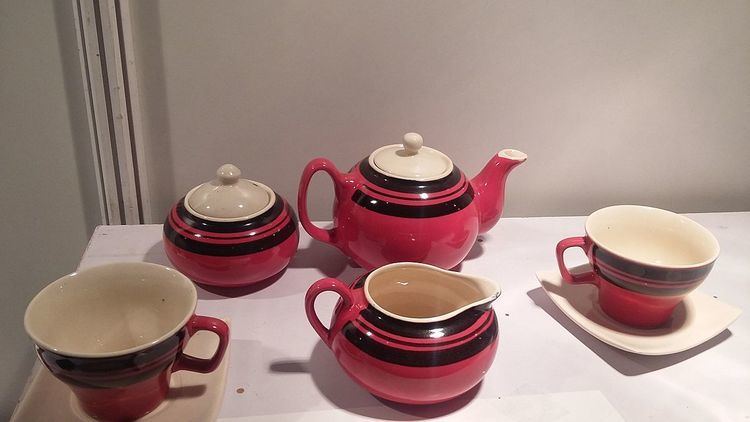Type Handicraft Registered 2008–2009 | Material Clay | |
 | ||
Area Khurja, Bulandshahr, UP | ||
Khurja pottery is traditional Indian pottery work that manufactured in Khurja of the Bulandshahr district in Uttar Pradesh state, India. Khurja pottery has been protected under the Geographical indication (GI) of the Agreement on Trade-Related Aspects of Intellectual Property Rights (TRIPS) agreement. It is listed at item 178 as "Khurja Pottery" of the GI Act 1999 of the Government of India with registration confirmed by the Controller General of Patents Designs and Trademarks.
Contents
History
Origin of Khurja’s pottery work has been said with at least two different stories. In one legend, Afghan King Taimur Lung accompanied Egyptian and Syrian potters during his campaign in the Khurja region over 500 years ago. In another legend, potters had been moved to the region during Mughal Empire while another version says there we no long historical events in accordance with pottery tradition in Khurja.
However, the author of "Pottery-making Cultures and Indian Civilization" mentioned that "Khurja in Bulandshaher is one of the oldest centers for glazed pottery in India". Further mentioned, "These potters often call themselves as Multani Kumhars suggesting that their origin was Multan”.
Modern day pottery manufacture flourished in 1940s and Uttar Pradesh government has been setup a pottery factory in 1942. Later, the factory was closed in 1946–47 due to lack of quality. In 1952, the factory was changed as Pottery Development Centre. From 1942 until now, some adoption, transformation, initiative were taken by various actors for the betterment of pottery manufacture that resulted an importance role of Khurja pottery in national level as well as export to foreign countries.
Production
There are about 15,000 artisans as official employees while about 25,000 unofficial employees who work in 500-odd units and nearly 400 factories, making worldwide famous pottery or ceramic items. They produce several kinds of items such as crockery wares, art wares, electrical goods, sanitary wares, tiles, household items, etc. Various main raw materials such as kaolinite, plastic ball clay, quartz, potash feldspar, fire clay, Bikaner clay, Kundan clay are used for production and most of them are received from various parts of India. Zinc oxide, zirconia, barium carbonate, chromium oxide and soda feldspar chemicals are used as auxiliary raw materials.
Khurja pottery has market in India and foreign countries. There are nearly 23 export oriented units and they are exported to foreign countries such as the United Kingdom, USA, Australia, New Zealand, United Arab Emirates, etc. Reports say that production has received around 2,500 million Indian Rupees worth of item in 1999–2000 including 148.2 million Indian Rupees worth of export.
